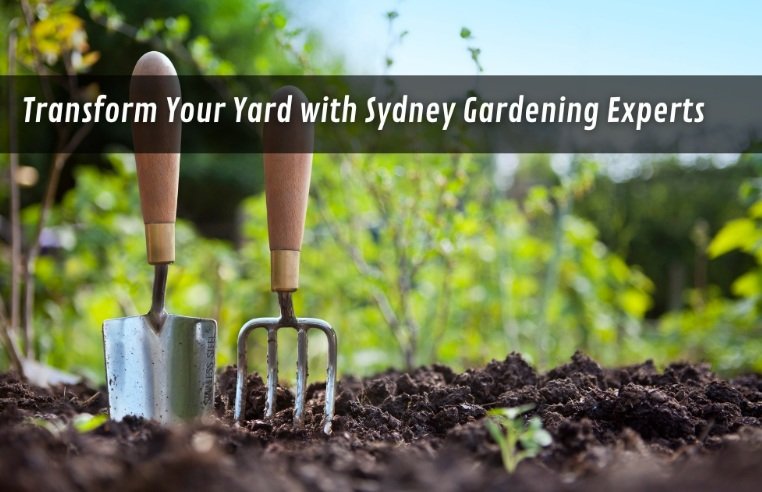
There’s something about a tidy garden that changes the whole feel of a home. It’s not just the way it looks — though neat hedges and a healthy green lawn can lift a place instantly — it’s also the calm you get from being in a space that’s looked after. In Sydney, though, keeping a garden in that condition can be tricky. The weather can turn quickly, plants don’t always behave the way you expect, and a weekend tidy-up only gets you so far. That’s why a lot of locals rely on gardening services in Sydney from trusted teams like All Green Gardening & Landscaping as part of their routine, not for flashy makeovers, but for steady, thoughtful care. The right approach keeps things growing well through the seasons, making even a small patch feel like a little sanctuary you’re happy to step into each day.
Many Sydneysiders also draw inspiration from the Royal Botanic Gardens Sydney, where careful plant choices and seasonal planning demonstrate how design and maintenance work together.
Enthusiasm will get you started, but skill will keep things alive. A seasoned gardener in Sydney comes with a whole library of unspoken knowledge — the sort you only get by watching the same patch of soil through a dozen changes of season.
I learned this the hard way. One spring, I went all in — planted a heap of bright flowers, put in a couple of shrubs I’d seen at a friend’s place. Looked great for a month or two. Then came a run of hot days, followed by a week of heavy rain. By the time I’d realised what was going wrong, half of it had died off, and the hedge was beyond saving. A pro turned it around, and the change was night and day.
Keeping plants alive is one thing — keeping them safe is another. It’s easy to forget that a garden can become a gateway for pests or diseases if you’re not careful. Following biosecurity in gardening is about making sure what happens in your yard stays in your yard — and that you’re not passing problems along to the rest of the community or the bush.
The CSIRO has highlighted that even small backyard gardens can act as entry points for invasive pests if hygiene practices aren’t followed.
It might mean:
I once took a cutting from a friend’s place — thought I was saving a few dollars. Not long after, I started seeing odd marks on the leaves. Turned out, the pest was common in her suburb but not in mine. Took me weeks to sort it out. If I’d been more mindful, I’d have saved myself the grief.
Not all gardens are meant to be showpieces. Some are for sitting in with a cup of tea, others for letting the kids run wild. The ones that really work are the ones that fit the people who use them. Getting the balance right is easier when you’ve got a few local garden design tips in your back pocket.
The Australian Institute of Landscape Architects (AILA) often reminds homeowners that good garden design is about long-term function, not just appearances.
You might think about:
One garden I remember started as a bit of lawn with a washing line. We laid out winding paths, planted low-maintenance natives, and popped a bench where the afternoon sun landed. It’s been years now, and it still looks great without needing constant fussing.
A garden’s not just “plants in dirt.” It’s a whole network of little systems, and when they work together, the place almost runs itself. That’s why a bit of thought at the start goes a long way — the way you shape the layout, choose your plants, and plan for growth all have lasting effects. Knowing why landscape design matters can change the way you approach even small projects, because it shifts the focus from quick fixes to long-term harmony in the space.
A few things worth considering for long-term success:
I’ve walked into gardens where someone’s planted everything at once, packed in tight. Looks full for the first year, but by the second or third, it’s a mess of overcrowded plants fighting for space. A bit of forward thinking would have saved them a lot of trouble.
More and more, Sydney gardeners are leaning into ways of doing things that keep the garden going without chewing through resources. It’s not about going “off-grid” — just making small shifts that add up.
Groups like Planet Ark encourage Australians to compost food scraps and garden waste, showing how small household actions can cut down on landfill while improving soil.
Here’s what that can look like:
In my own place, I’ve been swapping out the thirstier plants for ones that don’t mind a bit of neglect. The garden still looks lush, but I’m not out there every second day with the hose. It feels like the plants are doing their thing, and I’m just keeping them company.
A good garden doesn’t come together by accident. It’s the outcome of steady, thoughtful work — a bit of patience, a bit of knowing what to plant where, and a lot of paying attention. Bring in people who get the local conditions, and you’ve already got a head start. Keep making small, smart choices over time, and you’ll end up with a yard that feels just right — one you actually want to spend time in, season after season.
Unlock a Brighter Future: Why Solar Power is a Smart Investment
September 29, 2025Unlocking the Best Real Estate Investment Opportunities
September 26, 20257 Aircon Cleaning Tips Every Homeowner Should Know
September 22, 2025Finding Reliable Tenants with Top Property Management in Brisbane
September 9, 2025The Importance of Regular Electrical Safety Inspections
September 9, 2025